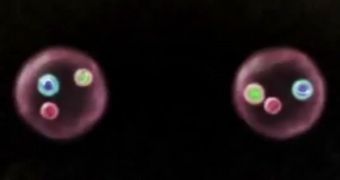Scientists at the University of Michigan (U-M) believe that the existence of the hypothesized Higgs boson could be either confirmed or infirmed by this summer. They say that the stage is set for this discovery, which will be remarkable regardless of the result.
This particular boson is the fifth force carrier in the Standard Model of Particle Physics, and its role is to convert other bosons into quarks and leptons, and vice-versa. In other words, it converts matter into energy and energy into matter.
The existence of the Higgs derives directly from the nature of the Standard Model, which has thus far provided a coherent explanation of the particle world around us. If it is shown to be false, then a vast number of other theories related to particles interactions may need to be rewritten.
On the other hand, if experts do manage to discover it, the boson would confirm that the only direction of research particle physicists followed for the past 40 years is indeed correct. Both confirming or infirming the Higgs are important, but for different reasons.
The announcement that the force carrier will be found by this summer was made by one of the 28 U-M scientists working at the Large Hadron Collider (LHC), the largest particle accelerator in the world. The facility is operated by the European Organization for Nuclear Research (CERN).
Jianming Qian holds an appointment as a physics professor in the U-M College of Literature, Science & the Arts. He believes that physicists are currently zooming in on the energy range where the Higgs – thought to be a relatively massive boson – may lie.
“We are increasing the data set and improving our search algorithms. With certain luck, we may be able to discover it this summer, but it depends on nature,” he goes on to say. Qian is a member of a group of 1,000 researchers who will spend time in Geneva looking for the boson all the way through August.
But this is one study that is not easy to complete. “We're looking for interesting anomalies in a huge amount of data,” the U-M physicist explains. The LHC ATLAS detector alone is able to “see” 300 proton or ion collisions each second, generating huge amounts of data that require careful analysis.
“People have been looking for Higgs for the past 40 years," he said. "It's more or less by chance that in my two or three years as a graduate student, I'm working on it when we'll be able to say whether it's here or not. It's an exciting time,” U-M PhD student in physics, Aaron Armbruster, concludes.

 14 DAY TRIAL //
14 DAY TRIAL //